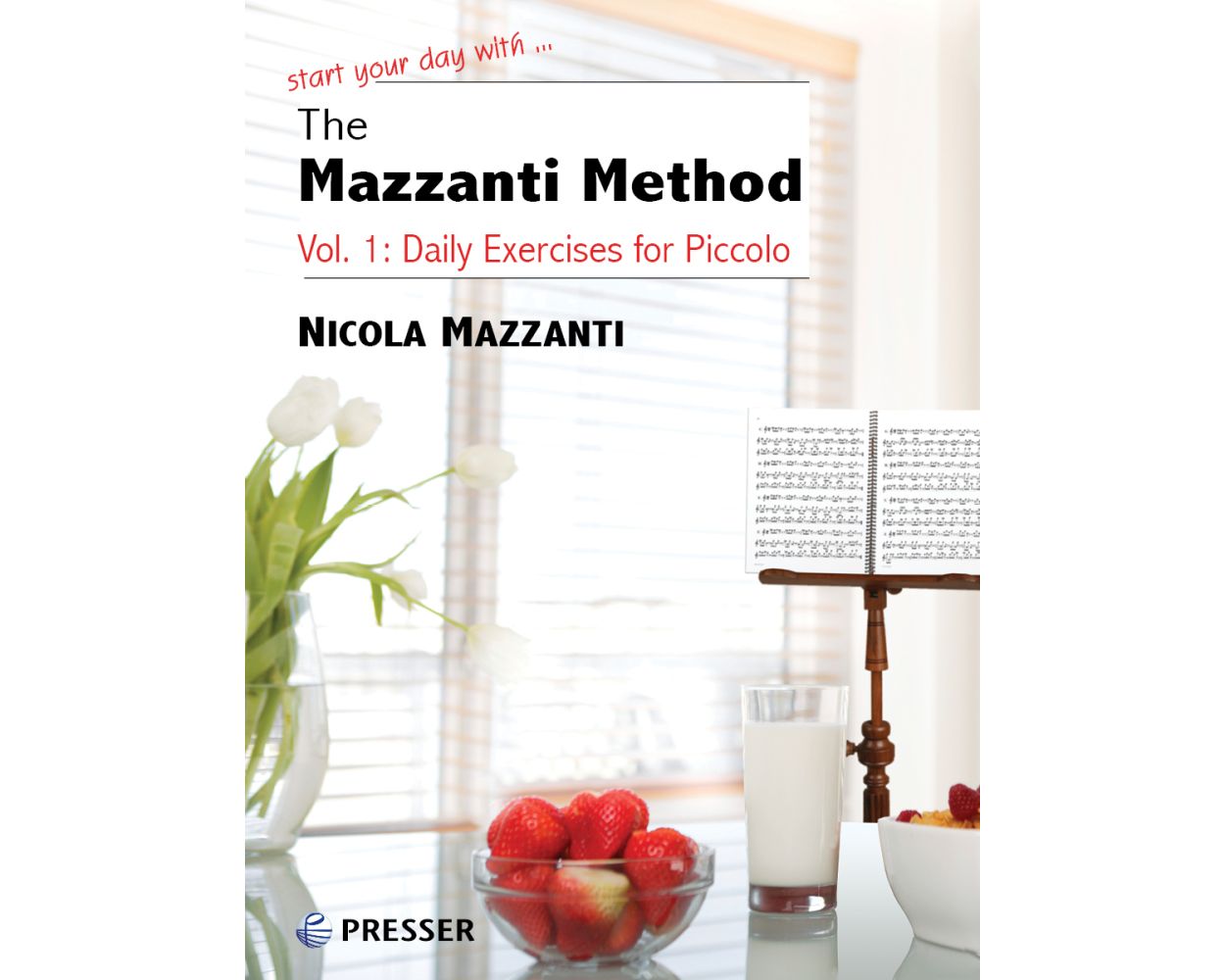The Mazzanti Method, Vol. 1
Daily Exercises for Piccolo
Nicola Mazzanti (composer)
Instrumentation
- Piccolo
$31.99
SKU
414-41212
Piccolo player Nicola Mazzanti is celebrated around the world as a foremost performer, teacher, and guest clinician. Mazzanti's lectures and workshops are known for his daily exercises for piccolo players, and The Mazzanti Method brings together his comprehensive collection of studies. Part I: SOUND is a complete course in itself, providing a wide spectrum of studies, discussions, "check points", repertoire melodies in twelve transpositions, tone, intonation, and more. Part II focuses on scales and arpeggios, while Part III: MELODIES, OPERA, AND LIEDER provides enriching opportunities to bring these technical lessons to practical application by using the greatest cantabile studies from vocal repertoire.
SKU: 414-41212
Publisher: Theodore Presser Company
Product Type: Methods and Studies
Accompanied: Unaccompanied Solo
Weight: 1.1 lbs.
UPC: 6-80160-61955-9
ISBN: 978-1-59806-697-5
Publisher: Theodore Presser Company
Product Type: Methods and Studies
Accompanied: Unaccompanied Solo
Weight: 1.1 lbs.
UPC: 6-80160-61955-9
ISBN: 978-1-59806-697-5
Introduction
PART I: SOUND
The Three Check points: Support, Larynx, and Embouchure
The First Check point: Support – Use Greater Pressure
Preliminary Exercises
Tone Exercises
Vocalises
Intonation
Flexibility of the High Notes
Tone Development Through Famous Melodies
Schubert: Sonata in A Minor, “Arpeggione,” Mvt. II
Brahms: Concerto for Violin, Mvt. II
Mahler: Symphony No. 2, Mvt. V
Schubert: Symphony No. 8, “Unfinished,” Mvt. I
Massenet: “Meditation,” from Thaïs
Mozart: Concerto for Clarinet, Mvt. II
English traditional song: The Water Is Wide
Rabboni: Sonata No. 13 in D Minor
Krakamp: Rosa
The Second Check point: Larynx and Oral Cavity – Open and Resonant
Low Notes
Variation Exercises (for Low Notes)
The Third Check point: Embouchure – Precise and Extremely Flexible
Flexibility Exercises
Variation Exercises (for Flexibility)
Applying the Three Checkpoints: Singing & Playing and Harmonics Exercises
Sing and Play Exercises
Harmonics
PART II: SCALES AND ARPEGGIOS
Introduction to Scales and Arpeggios
Chromaticism
Major Scales
Minor Scales
Three-note Arpeggios
Four-note Arpeggios
Three-note Broken Arpeggios
Four-note Broken Arpeggios
Agility
PART III: MELODIES, OPERAS, LIEDER
Introduction to Melodies, Operas, and Lieder
J.S. Bach: Cantata No. 156, Sinfonia
Puccini: La Bohème, “Vecchia zimarra”
Mozart: Don Giovanni, “Dalla sua pace”
Puccini: Gianni Schicchi, “O mio babbino caro”
Vivaldi: Flute Concerto No. 3 in D Major, “Il gardellino,” Mvt. II
Mozart: Sonata in C Major, K. 545, Mvt. II
Bellini: Norma, “Deh non volerli vittime”
Verdi: Rigoletto, “Tutte le feste al tempio”
Saint-Saëns: Carnival of the Animals, “The Swan”
Puccini: Tosca, “E lucevan le stelle”
Verdi: La Traviata, “Addio del passato”
Verdi: La Traviata, “Di Provenza il mar il suol”
Verdi: La Traviata, “Dite alla giovine”
Verdi: Rigoletto, “Si, vendetta, tremenda vendetta”
Donizetti: L’elisir d’amore, “Una furtiva lagrima”

